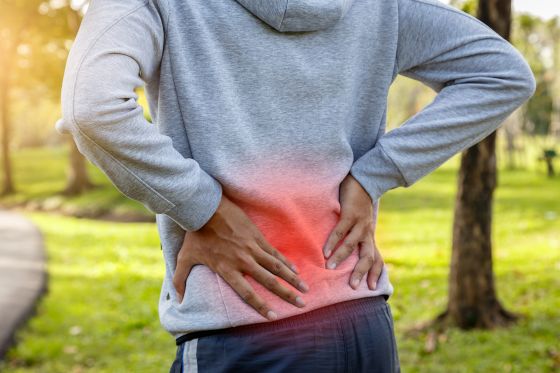As summer approaches and the world comes alive with activity, the last thing anyone wants is to be sidelined by lower back pain when walking or running.
Whether it’s exploring scenic trails, strolling along the beach, or simply enjoying a leisurely walk in the park, back pain can put a damper on outdoor adventures.
But fear not – relief is within reach.
In this blog post, we’ll delve into the world of back pain, exploring its causes, symptoms, and various relief options.
Plus, we’ll uncover the role that orthotics can play in alleviating lower back pain and restoring mobility, allowing you to embrace the joys of summer without hesitation.
Understanding Back Pain
Back pain is a common ailment that affects millions of people worldwide.
It can manifest in various forms, from dull, achy discomfort to sharp, stabbing sensations.
Whether it’s triggered by muscle strain, poor posture, spinal misalignment, or underlying medical conditions, back pain can significantly impact one’s quality of life.
Those who lead active lifestyles, such as runners and walkers, are particularly susceptible to lower back pain when walking, as repetitive motion and impact can exacerbate existing issues.
The Impact of Back Pain
For individuals who love staying active and embracing the great outdoors, back pain can be especially frustrating.
It robs them of the freedom to explore new trails, embark on outdoor adventures, and simply enjoy the beauty of nature.
Instead of relishing in the sights and sounds of summer, they find themselves sidelined, grappling with discomfort and limited mobility.
Tips for Back Pain Relief
Fortunately, there are various strategies for managing and alleviating back pain.
From gentle stretches and strengthening exercises to maintaining good posture and investing in supportive footwear, there’s no shortage of options to explore.
Additionally, practicing mindfulness techniques, such as deep breathing and meditation, can help reduce stress and tension, easing the strain on your back muscles.
- Gentle Stretches: Incorporate gentle stretching exercises into your daily routine to improve flexibility and relieve tension in the muscles supporting your spine. Focus on stretches that target the hamstrings, hip flexors, and lower back.
- Strengthening Exercises: Engage in strength-training exercises to build muscle strength and stability in the core, back, and supporting muscles. Incorporate exercises like planks, bridges, and squats to strengthen the muscles that support your spine.
- Maintain Good Posture: Practice good posture throughout the day, whether sitting, standing, or walking. Keep your spine aligned and avoid slouching or hunching forward, which can put undue strain on your back muscles and ligaments.
- Mindfulness Techniques: Practice mindfulness techniques such as deep breathing, meditation, and progressive muscle relaxation to reduce stress and tension in your body. These techniques can help alleviate muscle tightness and promote relaxation, easing the strain on your back muscles.
- Stay Hydrated: Drink plenty of water throughout the day to keep your body hydrated and maintain optimal spinal health. Proper hydration helps lubricate the joints, cushion the spinal discs, and support overall musculoskeletal function.
- Nutritious Diet: Maintain a balanced and nutritious diet rich in vitamins, minerals, and antioxidants to support spinal health and reduce inflammation. Include foods high in omega-3 fatty acids, such as fatty fish, nuts, and seeds, to help combat inflammation and promote tissue repair.
- Invest in Supportive Footwear: Choose footwear with adequate arch support and cushioning to promote proper alignment of the feet and reduce stress on the lower back. Consider using orthotic inserts to provide additional support and stability.
By incorporating these tips into your daily routine, you can effectively manage and alleviate back pain, allowing you to enjoy an active and pain-free lifestyle.
The Role of Orthotics
One powerful tool in the battle against lower back pain is orthotics.
Custom orthotic inserts are specially designed to provide support, stability, and alignment for the feet, which can have a ripple effect on the entire body.
By correcting biomechanical imbalances and redistributing pressure, orthotics help alleviate strain on the lower back, reducing pain and discomfort when walking.
Orthotics are particularly beneficial for individuals who experience back pain related to issues such as overpronation or flat feet.
By providing additional arch support and cushioning, orthotics help maintain proper alignment of the feet, ankles, knees, and hips, thereby reducing stress on the lower back.
Your Next Steps
Curious about whether orthotics are right for you?
At Paul Gough Physio Rooms, we have FREE options available to help you explore the benefits of orthotics for back pain relief.
Whether you prefer an in-person FREE 15 minute taster session or a remote FREE 15 minute telephone consultation, our experienced team is here to provide you with the information and support you need to make informed decisions about your health.
Take the first step towards a brighter, pain-free future and get in touch with us now to book your appointment!
Other Free Resources For Easing Lower Back Pain When Walking
Read Our Blog – How To Avoid Lower Back Pain – 9 Tips To Help You Live With Freedom
Read Our Blog – Do Orthotics Really Work? YES – And Here’s How!


